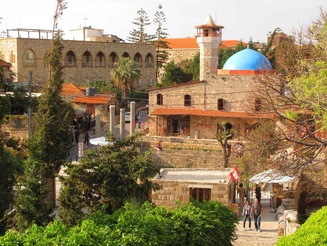
Book our Private Jeita Grotto & Byblos Tour
Byblos is a charming and laid-back village situated on the shore about 40 kilometers north of Beirut. It has a picturesque ancient fishing harbor and an attractive and quiet historical center; at some places surrounded by old walls.
With its 7,000 years of history, Byblos - known as Gibal in the bible - received the UNESCO World Heritage Site status in 1984. Around 3000 BC, it was the most important port in Lebanon with the Canaanites as its first known merchants, exporting cedar wood to Egypt in exchange for gold and linen; a position that was lost to Saida and Tyre during the first millennium BC.
Presumably, it is in Byblos where the Phoenicians - inspired by the Egyptian hieroglyphic script - created the first 22 letter phonetic alphabet. This alphabet was adopted by the Greeks in 800 BC, and later became the foundation of our modern Latin alphabet. The Greeks provided the village with the name Byblos, referring to the papyrus traded there. Other clear traces in Byblos come from the Romans (64 BC); the Byzantines who caused the shift from pagan religion to Christianity and turned Byblos into a religious center (395); and the Crusaders providing the city with the name Giblet and fortifying Byblos with ramparts (1104).
Allow yourself at least a day to visit the archaeological site, stroll around the enchanting and nicely resorted souqs, and breathe the serene atmosphere of the harbor. Byblos is also great for enjoying a drink, lunch or dinner in one of its numerous pretty bars and (seafood) restaurants In summer, try the surrounding beaches and beach clubs for a day of sunbathing and swimming.
